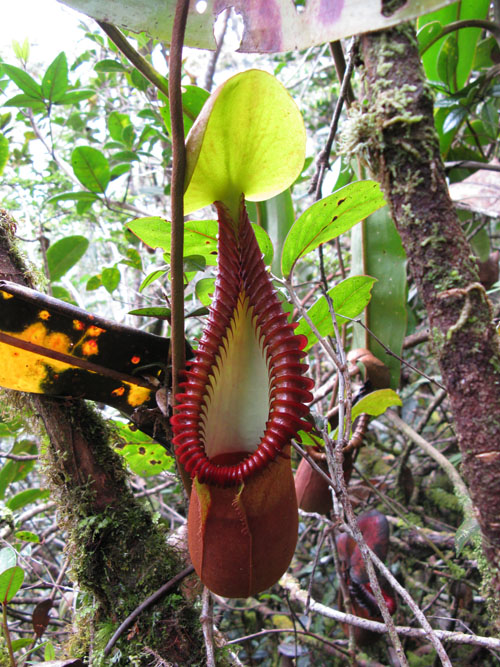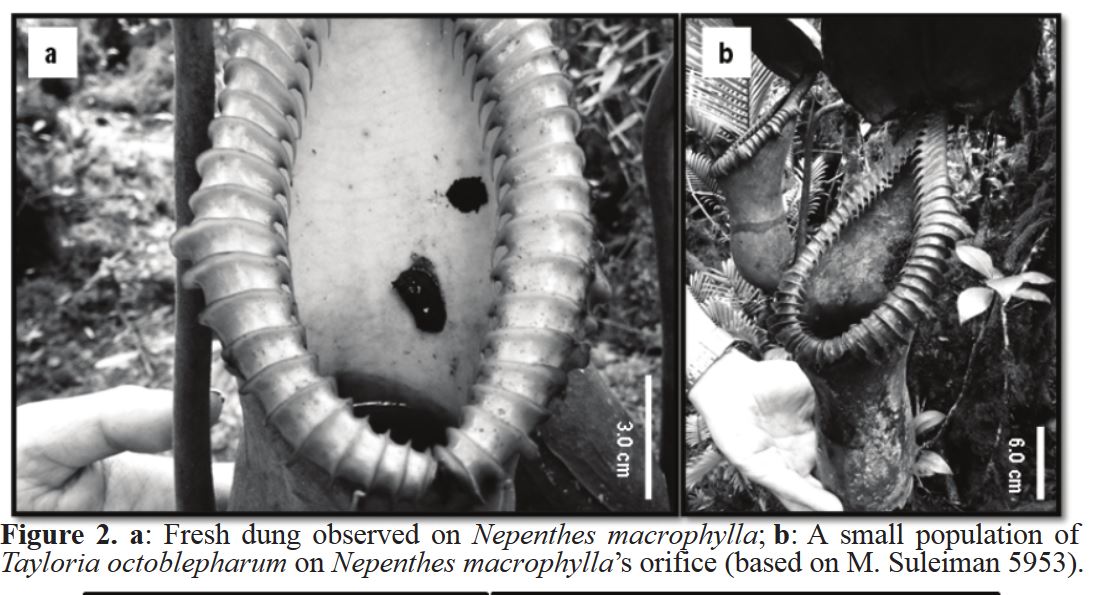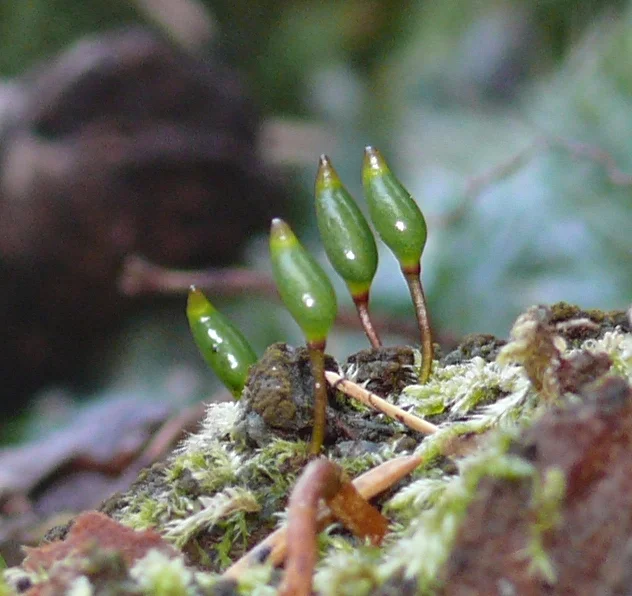Photo by Alpsdake licensed under CC BY-SA 4.0
Luminous moss, dragon’s gold, goblin’s gold… when a moss has this many common names, you know it must catch the eye. Indeed, Schistostega pennata might just be one of the most dazzling of mosses around, that is provided you know where and how to look for it.
Let’s begin with a brief introduction. Goblin’s gold is the only member of both its genus (Schistostega) and family (Schistostegaceae). Despite its unique taxonomic position, it is nonetheless a widespread species, growing naturally throughout many temperate regions of the Northern Hemisphere.
When fully grown, the gametophyte stage of goblin’s gold sort-of resembles a tiny, green, semi-translucent feather. Small spore capsules are borne on the spindly stalk of the sporophyte and the resulting spores are said to be quite sticky. Instead of relying on wind to disperse its propagules, golbin’s gold utilizes animals. The spores are sticky enough that they get glom onto any insects or other small animals that brush up against them.
The mature gametophyte of Schistostega pennata. Photo by HermannSchachner licensed under Public Domain
None of this, however, gives a hint as to how it earned all of those colorful names. To find that out, one must be ready to brave dark, damp spaces like caves. You see, though it can grow in more open habitats, you are most likely to encounter goblin’s gold in dark crevices or under overhangs. It has been said that goblin’s gold does not compete well with other plants in most habitats, but that doesn’t mean it doesn’t have a few tricks up its stems that give it an edge in other types of habitats.
For most plants, caves and other dark places are a no go. They simply can’t get enough light to survive. Such is not the case for goblin’s gold. Instead of trying to compete with more aggressive vegetation, goblin’s gold occupies deeply shaded habitats that few other plants can. It owes its shade-tolerant abilities to a stage of its development most of us rarely think about, let alone notice.
Photo by Jymm licensed under CC BY-SA 4.0
When a moss spore germinates, it doesn’t immediately look like what we would recognize as a moss. Instead, it grows into thread-like, multicellular fillaments called a “protonema.” You can think of this as the juvenile stage of the gametophyte. The protonema spreads outward as it grows, gradually producing hormones and other growth regulators that will control the development of the mature gametophyte. Because goblin’s gold grows in such dark habitats, it can’t afford to grow its gametophyte anywhere. To grow long enough to reproduce, it has to find spots where there is enough light to complete its lifecycle.
This is where the protonema comes in. In much the same why that fungal hyphae fan out into the soil in search of food to decompose, goblin’s gold protonema fan out over the damp substrate, searching for spots where enough light filters through to fuel growth. Luckily, the protonema can make do with much less light that the mature gametophyte, which also happens to be how this tiny moss earned so many interesting nicknames.
When grown in deep shade, the protonema of goblin’s gold develops a layer of lens-shaped cells on its surface. The opposite side of each cell narrows to a cone. When light, no matter how weak, strikes these lens cells, the curvature focuses the light down into the cell so that it is concentrated into the tip at the bottom. Being able to sense the direction of the light, the chloroplasts within each cell can actually move around so that they are always in a position that maximizes their exposure. Through this process, each cell is able to concentrate what little light is available so that they can photosynthesize in light so low that nearly all other plants will starve.
The light concentrating mechanism of the goblin’s gold protonema happens to have a wonderful and stunning side effect. As light enters the lens, small amounts of it are refracted around the cell. When that refracted light mixes with the green light that isn’t absorbed by the chloroplasts, it bounces back into the environment, giving the whole protonemal mat a green florescent glow when viewed in just the right way.
By being able to make use of what little light finds its way into these dark habitats, goblin’s gold can grow largely free of competition. Also, the protonema itself is capable of asexual reproduction so colonies can grow to epic proportions in dark areas, only producing mature gametophytes in a few spots. Interestingly, there appears to be some plasticity to this light-concentrating habit as well. When observing goblin’s gold protonema that develop under high light conditions, researchers have found that they do not develop lens shaped cells and therefore are not capable of reflecting light in the same way.
Humans have known about this moss for centuries, even if they didn’t understand the mechanisms that cause it, and that is why this wonderfully unique species has earned so many common names.

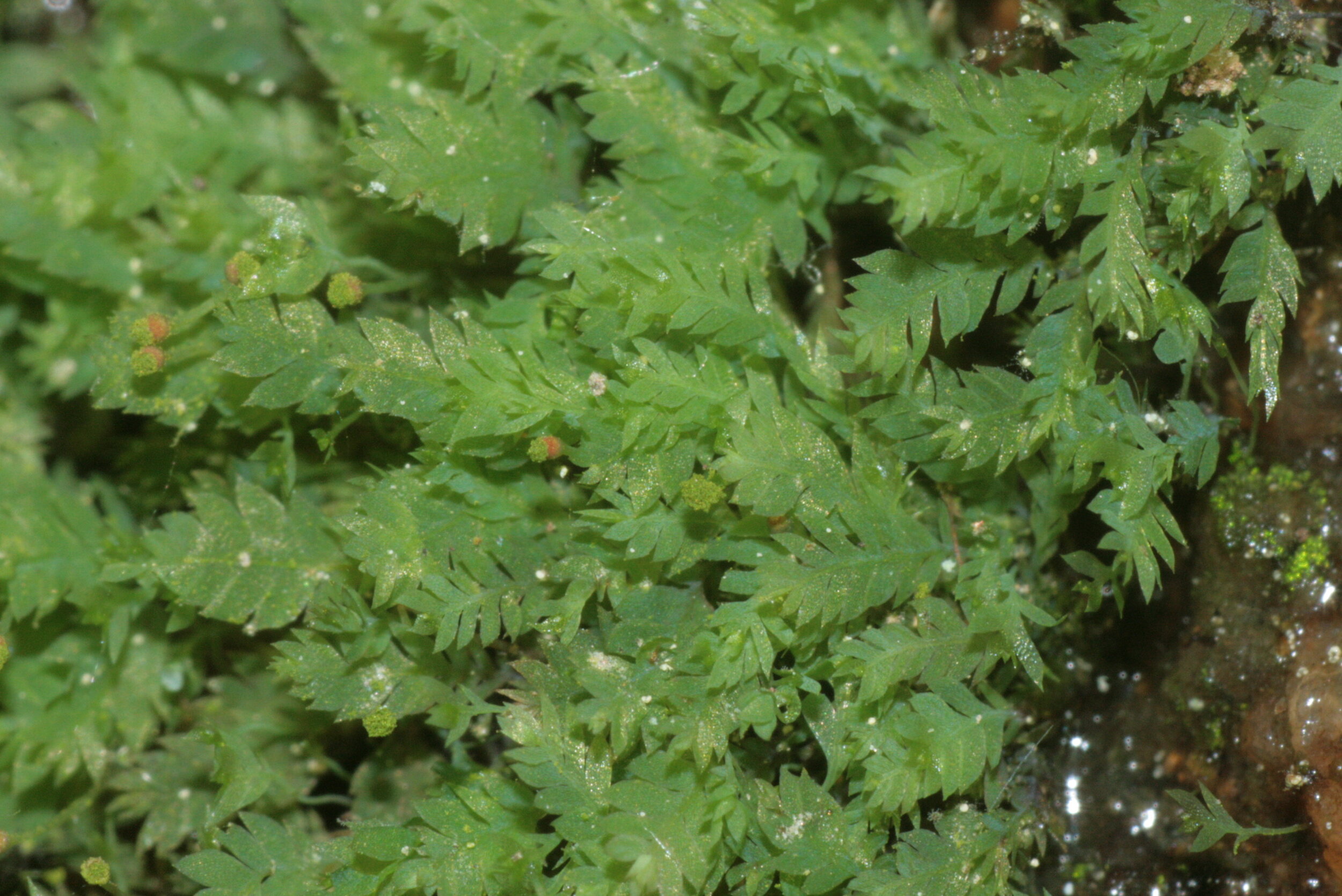

![[SOURCE]](https://images.squarespace-cdn.com/content/v1/544591e6e4b0135285aeb5b6/1613433474632-L8GFJ3YJX19Q9XPWB4ZR/lens.JPG)
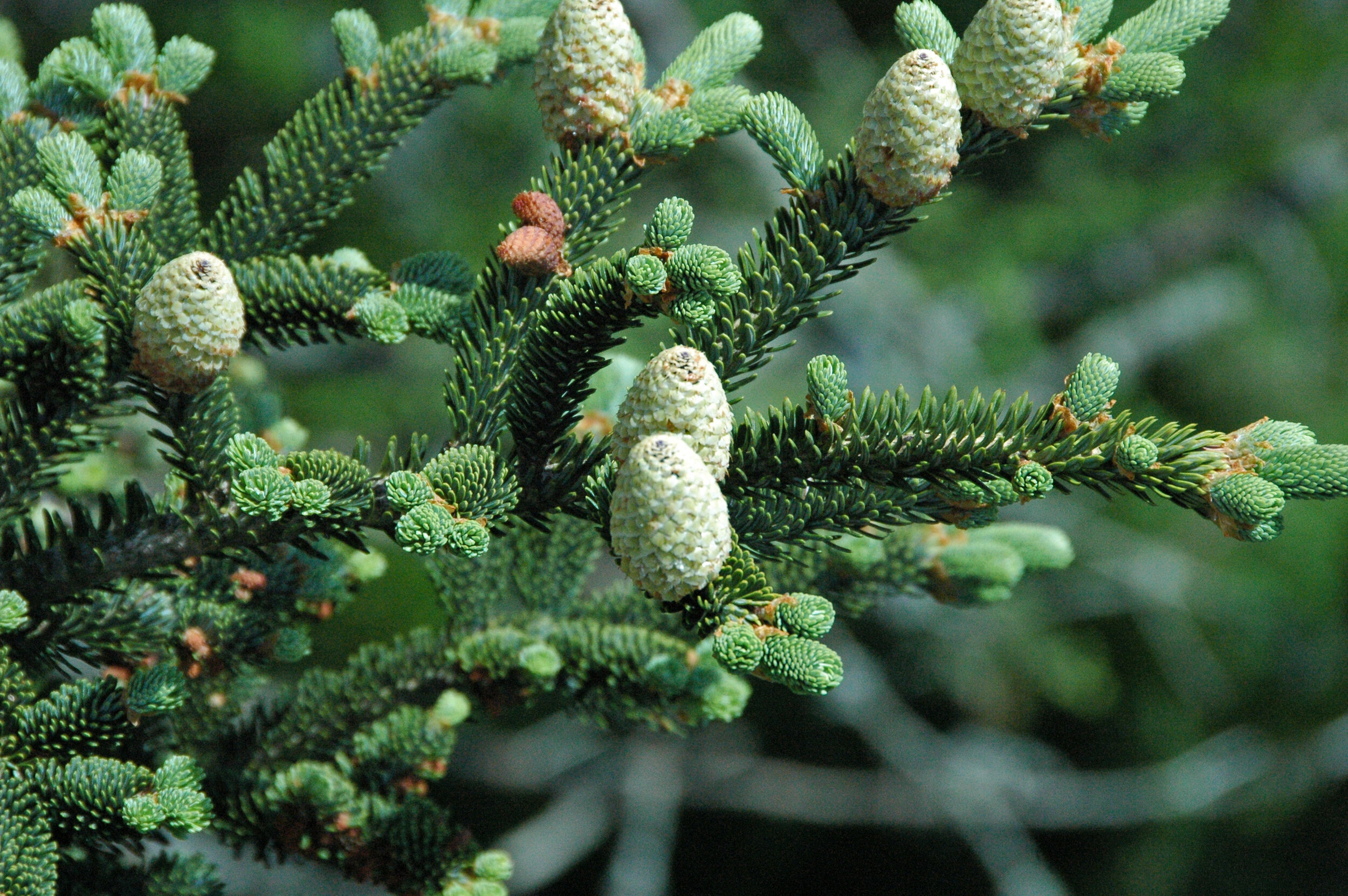




![Syntrichia caninervis growing in both soil surface and milky quartz. [SOURCE]](https://images.squarespace-cdn.com/content/v1/544591e6e4b0135285aeb5b6/1596125329330-RWYPR68OSOIXG5AWE3EN/mossrock.png)
![Tortula inermis (white arrow) and S. caninervis (black arrow) growing in a milky quartz. [SOURCE]](https://images.squarespace-cdn.com/content/v1/544591e6e4b0135285aeb5b6/1596128581756-SZLGMLQQ27C9GX0IGMMN/mossrock2.png)
![Tortula inermis was more likely to be found growing under quartz at high elevations. [SOURCE]](https://images.squarespace-cdn.com/content/v1/544591e6e4b0135285aeb5b6/1596128741494-5OR9HUY18IL5JK888XY4/t_inermis.jpg)

![(A) Box plot of hypolithic and soil surface S. caninervis shoot length. (B) An S. caninervis shoot fromunder quartz. (C) An S. caninervis shoot from the soil surface. [SOURCE]](https://images.squarespace-cdn.com/content/v1/544591e6e4b0135285aeb5b6/1596128644865-RJZXZN3WBZBCXW85B263/journal.pone.0235928.g005.PNG)

